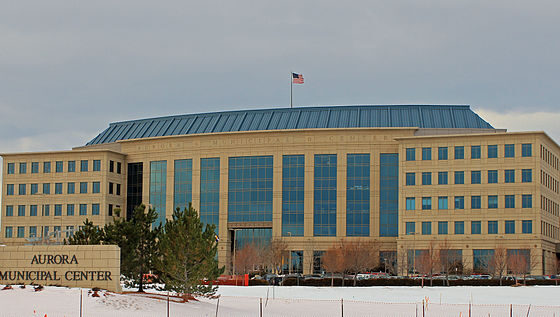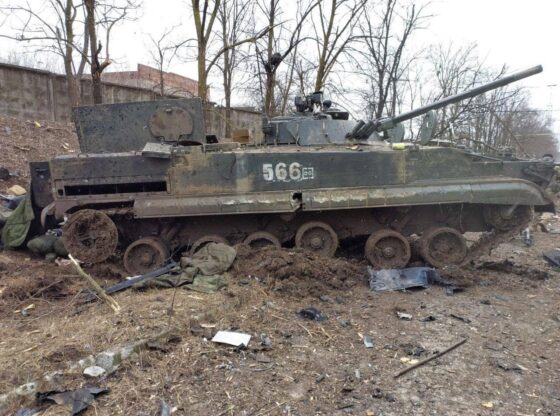For students studying science, technology, engineering and mathematics (STEM), classes and labs have changed in drastic ways. When COVID-19 arrived in the U.S., DU professors quickly transitioned their classes online. This complicated students’ education and enforced online simulations instead of the standard hands-on experiences
Now, as the university undergoes hybrid classes, students are back to the labs where they can see the theories they studied in lectures unfold in front of them. However, while these new labs keep students and the DU community functioning safely during the pandemic, the college experience has still not returned to normal. The administration is unsure if the students will be able to maintain this hyflex hands-on experience for the entire school year.
Before COVID-19, STEM students would attend class and labs in person. The students would work with partners to carry out experiments and record data collected during the experiment. Graduate or sometimes undergraduate Teaching Assistants (TAs) taught the lab course and helped students as they worked.
STEM students stressed how important the lab sections are for understanding their majors.
“They are a very good way of turning abstract chemical stuff into physical realities because sometimes it is hard to consolidate those two views,” said Nikolas Tafoya, a senior chemistry major and T.A. in organic chemistry. “You sit through class and talk about theories for six hours a week, and you can’t really see that theory in action. The labs are designed to make [the theories] visible, and that is important.”
Without labs, students are struggling to understand core STEM concepts and finding it difficult to learn necessary skills for continuing their study or research after college.
Another junior chemistry major, Roman Shrestha, stated that labs are not only great for understanding theories but as a time to socialize.
“You do experiments, but you also have some free time,” said Shrestha. “It’s more than just experiments––there is also the social aspect.”
Interviewees understood the university was doing everything it could to keep the community safe, but they reiterated that virtual labs in spring quarter felt like a joke.
“For one of my chemistry classes, the school tried to make it virtual. It was like a simulation of the lab itself, where you are dragging chemicals together,” said Shrestha. “It felt kind of like playing a game.”
Tafoya was taking an instrument analysis class during spring quarter, which discussed how to use measurement tools in real-world situations. He expressed that knowing how to use these instruments is important if a student wants to go into the chemistry field later in life.
“We messed with computer simulations, which was not great because that lab was important for understanding new instruments we hadn’t used before,” said Tafoya. “Using only online tools didn’t make for a great lab. This isn’t against any of the professors who taught [the course], but it just didn’t work out.”
The online structure of the class also disturbed students’ ability to focus. Being in a bedroom instead of an academic building for class made for easy distractions.
“When I tried to concentrate on something, my mind deviated somewhere else,” said Shrestha. “I could not focus on what the person was talking about on the screen.”
When students came back to school in Sept., the university permitted limited in-person labs, allowing students to have more hands-on experiences.
Currently, to keep the infection rate down, lab capacity is cut by 50%. Each student has one lab partner who they meet with online. One student is in the lab, conducting the experiment, while the other partner watches through Zoom. The student on Zoom records the data found by their partner, and these roles switch every week.
STEM students expressed they were glad that labs were not virtual, but this new structure is a difficult learning environment.
“The hybrid aspect means you get to participate [in-person] every other week—which, to me, is kind of unfortunate,” said Tafoya. ”But overall, it’s working decently well…not only do you have to do the lab yourself, but you have to explain it to the people watching.”
Shrestha emphasized this struggle: “When you’re in the lab… mixing different chemicals, using the different techniques, performing the different reactions––there’s no way you can watch that over Zoom and learn it.”
However, the students stated they feel safe learning in person since everyone respects the safety rules.
“Everyone understands the rules they should follow,” said Mckensey Bishop, a junior biology major. “Everyone knows the value of [the rules] and the purpose.” She went on to explain how these rules were already strict in biology labs pre-COVID, and the only significant difference she has noticed is the lack of movement due to social distancing. Other students agreed, as they already had to wear specific clothing, wash their hands and wipe down surfaces in order to not contaminate any samples or future experiments in normal labs.
On top of not gaining the full learning experience of normal labs, students do not feel as though they are gaining the same college experience either. Bishop said that she felt restricted socially herself.
“I’m big on group studying, and that’s what I’ve been doing over the past years with in-person collaboration at the SEC [Science and Engineering Center],” said Bishop. “It’s been interesting not having that [because] you don’t realize how social class is. I didn’t know how bad it would be.”
Shrestha expressed a similar sentiment about the lack of social interaction: “For the social aspect [online], there are Zoom breakout rooms [in labs and classes]. But in some of my classes, I feel like no one talks to each other. Whereas if I am in-person in a small group, we will be talking about at least something. The social activity is restricted.”
Even with the university attempting to create the best learning environment it can during these confusing new times, virtual classrooms have changed how students learn.
In its plan for 2019-2024, DU’s College of Natural Sciences and Mathematics affirmed this, stating: “Experiential learning… builds an environment of teamwork, one of the most sought-after skills in the profession.”
“I think they’re building teamwork skills in a different way,” said Tafoya. “It used to be that you did a lot of experiments together as a group of four, so you had to get used to working with your group. But now you have to do the experiments by yourself and make sure that your team knows what’s going on.”
Despite all of these setbacks to the labs and the student learning experience, Tafoya pointed out a silver lining through the prospect of new research opportunities. He shared that the STEM department is doing its own research to help with safety during the pandemic.
STEM professors are able to use research with campus wastewater to track COVID-19 positivity rates in different dormitories. They are also studying the airflow in campus buildings and how air particles travel. Students can observe the research, which has proven to be a beneficial learning opportunity.
Bishop, who is studying to be a doctor, has also seen new research opportunities. Students in her department work with a clinic and study patients, analyzing how COVID affects the body.
While students understand the university is doing the best it can during these unpredictable times, they hope to gain these necessary skills for future careers. But with the university recently announcing a transition into Code Orange, will current STEM majors ever go back to virtual labs? If so, students feel they will not be given the proper tools to learn the invaluable skills of teamwork, understand theories from class and use instruments to gather the data necessary. Without these tools, the university will have to find novel ways to educate and train its STEM students.











